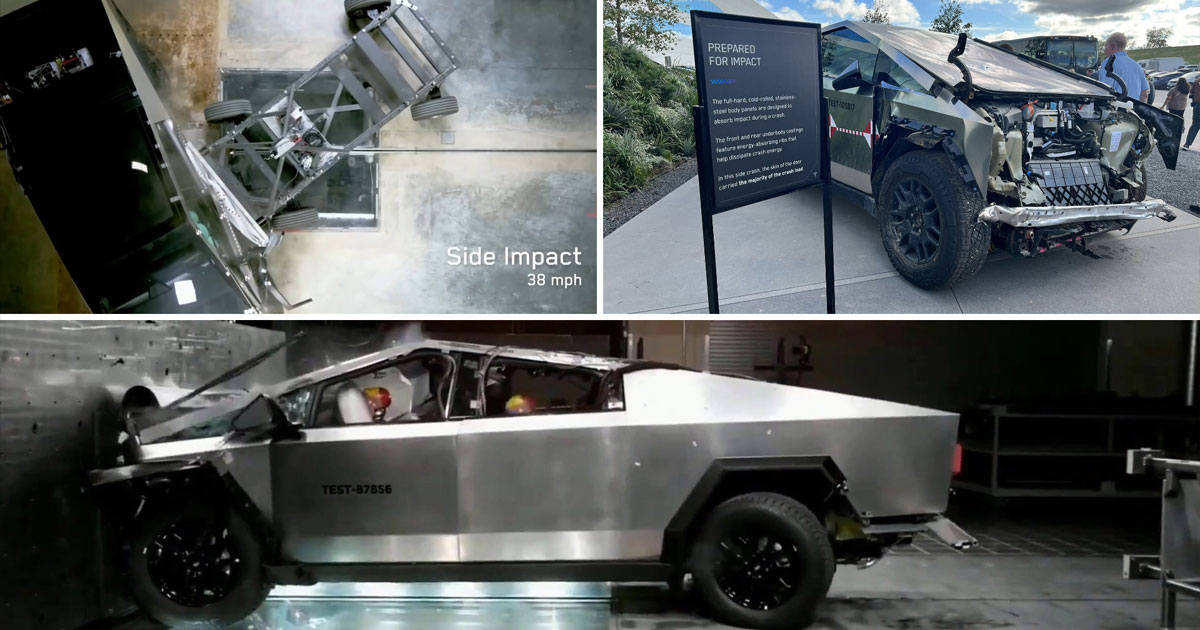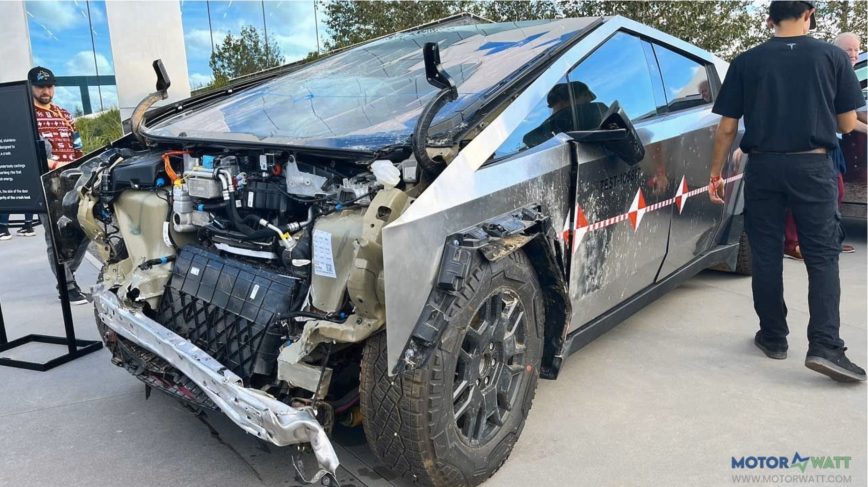Cybertruck’s Elusive New Crash Test Results

As a car enthusiast, the excitement surrounding the Tesla Cybertruck’s release was palpable. Its bold, unconventional design and promises of groundbreaking features captured the imagination of the automotive world. However, the excitement has been tempered by concerns about the vehicle’s crashworthiness, particularly due to its unique “stainless” steel body. The rollout of the Cybertruck has encountered some significant hurdles, especially regarding crash test ratings from the National Highway Traffic Safety Administration (NHTSA) and the Insurance Institute for Highway Safety (IIHS).
The Arrival of the Cybertruck
A slow trickle of Cybertrucks has started making their way into the hands of American consumers. Despite the hype, the rollout has not been smooth, with several “speed bumps” along the way, primarily related to the vehicle’s safety and crashworthiness. The Cybertruck’s distinctive stainless steel body, while visually striking, has raised questions about its ability to protect occupants in the event of a crash.
The Challenge of Crash Testing
Not every vehicle on the road undergoes crash testing. Regulatory organizations like the NHTSA and the IIHS focus on testing vehicles that are expected to have the broadest impact on public safety.

Lower volume models, rare, or expensive vehicles often slip through the cracks. This focus means the Cybertruck, despite its high profile, has not yet been crash-tested by these agencies.
NHTSA’s Stance on the Cybertruck
In December, the NHTSA released its list of vehicles planned for crash testing in 2024. While several electric vehicles (EVs), including models from VinFast, made the list, the Tesla Cybertruck was notably absent. The NHTSA does not “approve” new vehicles per se but establishes performance requirements that vehicles must meet to comply with Federal Motor Vehicle Safety Standards (FMVSS). Manufacturers, including Tesla, certify compliance with these standards through internal crash testing. However, the absence of NHTSA’s independent crash testing for the Cybertruck means there are no official crashworthiness ratings from this authority.
IIHS’s Approach to the Cybertruck
The IIHS, another major player in vehicle safety ratings, also has no immediate plans to test the Cybertruck. According to Joe Young of the IIHS, automakers perform their own crash tests to ensure compliance with federal regulations and for internal purposes. While the Cybertruck meets federal motor vehicle safety standards, the IIHS has yet to evaluate it independently. Young indicated that the IIHS might consider testing the Cybertruck in the future if consumer interest in the vehicle is high enough.
Tesla’s In-House Testing
During an event last November, Tesla implied that it had crash-tested the Cybertruck, showing a video of the process. However, the lack of detailed data from these tests makes them of little use to safety-conscious consumers. Given Tesla’s history of releasing misleading videos, many consumers remain skeptical about the validity of these tests. In the video, the Cybertruck appeared to shatter rather than crumple in a head-on collision, raising further questions about its safety.
Real-World Crash Data
Since its release, there has been at least one reported crash involving a Cybertruck, resulting in minor injuries to the driver. While this incident provides some real-world data, it is not sufficient to draw definitive conclusions about the vehicle’s overall safety.
Musk’s Claims and Consumer Skepticism
Elon Musk has marketed the Cybertruck as the ultimate vehicle for apocalypse preppers, boasting about its durability and ruggedness. However, these claims have yet to be substantiated with concrete safety data. For both occupants and pedestrians, the safety of the Cybertruck remains an open question.
The Need for Official Ratings
Without official crash test ratings from the NHTSA or IIHS, potential buyers are left in the dark about the Cybertruck’s crashworthiness. This lack of data is concerning, especially given the vehicle’s unconventional design and materials. Although Tesla’s internal testing indicates compliance with federal standards, independent verification from respected safety organizations would provide much-needed reassurance to consumers.
The Impact on Consumer Confidence
For a vehicle as high-profile as the Cybertruck, the absence of official safety ratings could impact consumer confidence. Many potential buyers look to NHTSA and IIHS ratings as key factors in their purchasing decisions. Without these endorsements, some consumers may hesitate to invest in the Cybertruck, despite its innovative features and bold design.
Lessons for Car Enthusiasts
As a car enthusiast, it’s important to approach new vehicle releases with a critical eye, especially when it comes to safety. The Cybertruck’s situation highlights the need for thorough, independent testing and transparency from manufacturers. Enthusiasts and consumers alike should advocate for comprehensive safety evaluations to ensure that innovative designs do not come at the expense of occupant protection.
Looking Ahead
The future of the Tesla Cybertruck’s safety ratings remains uncertain. As production ramps up and more units hit the road, there may be increased pressure on the NHTSA and IIHS to conduct independent crash tests. In the meantime, potential buyers should stay informed about any new developments and consider the broader implications of purchasing a vehicle without verified crash test ratings.
Conclusion
The Tesla Cybertruck represents a bold leap forward in automotive design and technology. However, its unique construction and lack of independent crash test ratings raise important questions about safety. As a car enthusiast, it’s essential to balance excitement for innovation with a commitment to safety. The ongoing situation with the Cybertruck serves as a reminder of the importance of independent testing and transparent communication from manufacturers. Until the Cybertruck receives official crashworthiness ratings, consumers should proceed with caution and prioritize safety in their purchasing decisions.
Photo Credit – motorwatt

